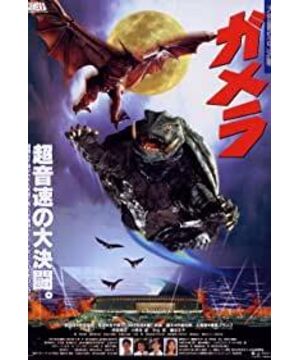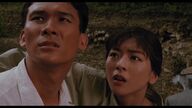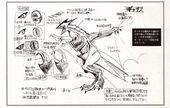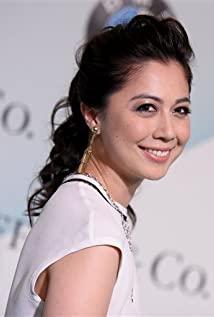I saved resources a long time ago, I just read it today, and now I write about the aftermath.
The whole story is divided into three distinct phases.
The first stage: Introduce the main characters, introduce Gamela and Gaos, show a wave of their strength and characteristics, and at the same time foreshadow the subsequent plot. It ends with the first battle between Gamera and Gaos at Fukuoka Dome. The time is about 40 minutes from the beginning.
The second stage: Gamela is exposed to human vision, and the human side takes various measures and investigates the background of the two monsters. This stage is mainly to go up, but not to go down very much. While laying the ambush, the burden of the first 40 minutes is taken back, 40~70 minutes.
The third stage: Human beings and Gaos are defeated in battle, and Gamela returns to fight Gaos after a hard fight. 70 to the end.
Overall the first 70 minutes were pretty good. Especially in the first 40 minutes, the mystery and horror atmosphere of the giant creatures are really well created. But after entering the second stage, the plot is obviously going downhill: the character building has basically not improved except for the heroine; the emotional line between the hero and heroine is even more rigid; the connection between the heroine and Gamela makes me even more puzzled. , the final battle is a pure monster battle, there is no plot at all.
So I saw a sharp drop in my personal attention in the second half, and I kept looking at the progress bar impatiently. If it wasn't for the heroine's looks really good (?), I guess I wouldn't be able to finish reading it.
To sum up, this film can be regarded as high and low: the amazing show in the early stage is also the beginning of a very good commercial film, but the inability of the later plot gradually revealed that the excellent special production of this film could not save it. It ended with a rather boring ending.
Of course, while complaining about the plot, I also have to praise the film's excellent special production. Look at the staff: the supervisor is Kaneko Shusuke, and the special camera supervisor is Higuchi Shinji. Those who are familiar with Tesho should all know: the former is the supervision of Max Ultraman, the latter is the director of Shin Godzilla, a good friend of Anno Hideaki, and little-known is that he is Taguchi Kiyotaka’s master.
With such a powerful combination, the special shooting scenes of this film basically do not lose to Hollywood in the same period. To put it directly, because of the similar age, I will use Jurassic Park to make a comparison: the production of the two monster holsters in this film is so delicate that it can't compare with the dinosaur effect in Jurassic Park. But it can also be called under one dragon and over ten thousand people.
As shown in the picture above, this effect can be described as beautiful and true even today. And to be honest, I can't even tell at a glance whether this is the result of CG or special photography. Because although the special shooting effect of this film is excellent, the CG production is far inferior to Jurassic Park. But with pure physical technology, it is difficult for me to imagine how to make such a picture. So that's one of the major weaknesses of the film in my opinion. However, it was also at this time that the gap between the production levels of commercial films in Japan and the United States was widening. This difference is evident from the CG effect of this film.
Although the swallowing shot in the picture above is simple, the strong biological sense is not easy to reproduce with the current special photography technology. Therefore, I have to feel that the period from 1990 to 2000 was really the golden age of huge special photography: during this period, industrial technology advanced rapidly, and the leather case produced was better than the immature CG special effects of the same period. Computer technology is advancing with each passing day, and traditional special photography is gradually declining. Even Kamen Rider, who is a lifelong special photography, chose to commercialize it after insisting on it for a few years. As for the huge special film production companies that are not commercialized, such as Tsuburaya, it is very classic that they declared bankruptcy after finishing the production of the fourth Ultraman in the second phase of Heisei, and then commercialized it.
This film basically follows the routine of commercial films, focusing on the confrontation of two monsters, while sketching human scenes. This is surprisingly consistent with the idea of Legendary Pictures today's production of the Godzilla series of movies. But even so, we can still find something worth discussing in this one hour and thirty-five minute film.
"Even if I fall, I don't want to perish." This is the line that appears when the film reaches about 68 minutes. How should I put it, it is not easy to have such lines in the later stage of the literary drama.
As shown in the three gif pictures above, it can be called the peak of the film's literary drama. It lasts two and a half minutes. The first half of the content is very common environmental protection propaganda. The last few lines can be regarded as classics. If you are interested in this film, just take a look at the above.
From this we can see another problem with this film: the positioning is not clear. This is a very scary question. For example, the failure of Tsuburaya Nexus Ultraman gives the consequences if the positioning is not clear. Although this film is not like this, it is only a movie after all, without the limitations of the TV series of the year, and can pull back the box office with stunning visual effects, but this problem also exists. The overall style of the film is similar to that of Next, and both are realistic. But unlike the first episode of the first-generation version of the extended version of Next, the plot of this film has a more obvious sense of separation before and after. The compact narrative in the first 40 minutes is completely different from the conventional commercial effect after 40 minutes. As far as the style itself is concerned, it is also realistic in the early stage. In the later stage, it inexplicably returned to the all-age family carnival routine of the monster war, and the foreshadowing of the super ancient civilization given in the early stage was hastily, forcing the PG13 reunion, really... ...
But maybe I'm nitpicking, after all, it's a commercial film itself, because the times are different, the gorgeous effects of the past are just ordinary from the modern perspective that has been experienced with exquisite CG.
To sum up: This film is a qualified commercial film. Except for the final battle, it is really impossible to watch now. The overall level is very high, and it is also worth watching. Of course, non-special photography enthusiasts may not like it, but it is aimed at Nakayama Shinobi. Yan value, are you sure you don't want to try it?
and......
This is the teacher! ! Everyone's beloved 80 teacher! marvelous! !
View more about Gamera: Guardian of the Universe reviews










